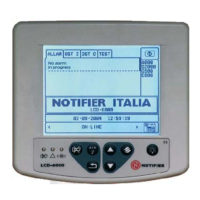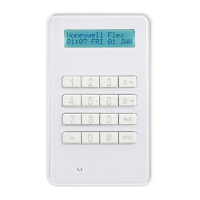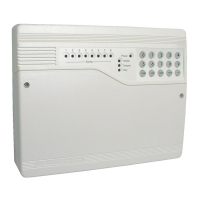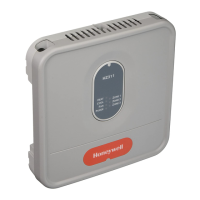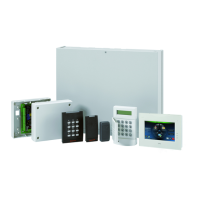Fire Alarm Control Panel LT-32 / LT-159
M-168.1-SERIE-LT-EN / 08.2022 19
7 CABLING
All wiring must comply with local regulations. Also observe the requirements for cabling and interconnection of a fire detection and alarm system. For
information on how to wiring compatible field devices, please refer to the related product documentation.
CABLING INSTRUCTIONS
1. Cables must be brought into the enclosure using the 20 mm cable entry points provided on the top and rear of the panel enclosure. Ensure that all openings in
the enclosure are closed before connecting power to the panel, to prevent inadvertent access to hazardous voltages.
2. Tails must be of sufficient length to connect to the respective terminal at the commissioning stage.
3. Cables that are screened must be terminated at the panel enclosure and earthed at points provided on the top side.
4. The mains supply must be suitably fused and rated as per specifications. Mains supply must have a dedicated path from the site distribution board, with an
over-current protection device rated at a maximum of 16 A.
5. The cable entry points on the extreme right-hand side must be used for mains cable entry. DO NOT route mains cable using any other cable entry points and
ensure that the mains wiring is always separated from the low voltage wiring. It is good practice to always isolate the mains power at the external isolator
equipment, to make the panel safe when performing maintenance tasks, involving the panel’s electronic equipment.
6. All low voltage cables must have a minimum 300 V AC rating.
CABLE GLANDS
Fire-industry-approved, M20 cable glands must be used, made from metal or having flammability class V-1 rating or better.
CABLE TERMINATIONS
This section provides guidance on where to bring cables into the Control Panel enclosure for ease of termination. Ensure the following requirements are met:
1. The mains supply must be brought into the FACP such that the cable path to the mains terminals block is kept as short as possible.
2. All loop and ancillary cable terminations must be brought into the panel enclosure using cable entry points close to their final connection points to respective
terminals, to ensure tails are kept as short as possible. To facilitate this most, modules can be fitted to the required slot location on the module carrier.
3. Some cable entry points must be left unused to provide adequate mains supply input/signal cable segregation.
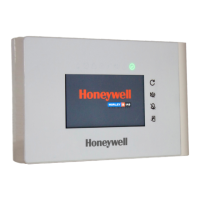
